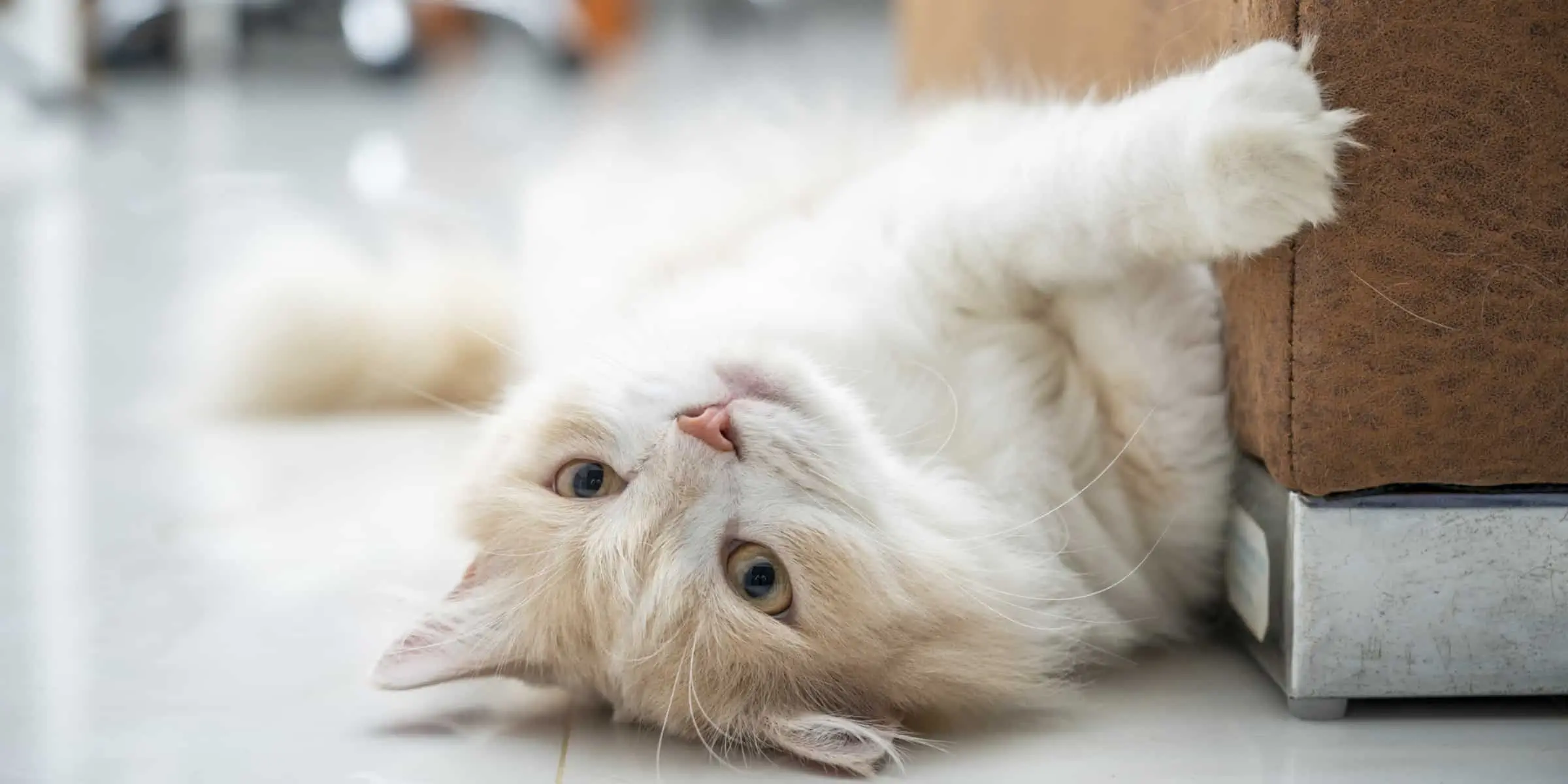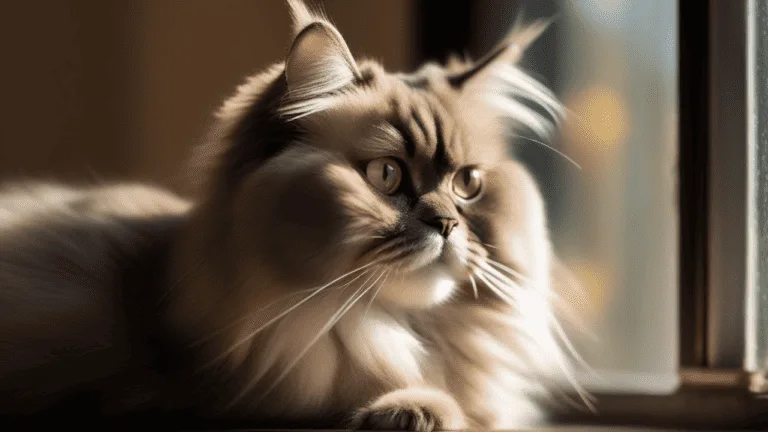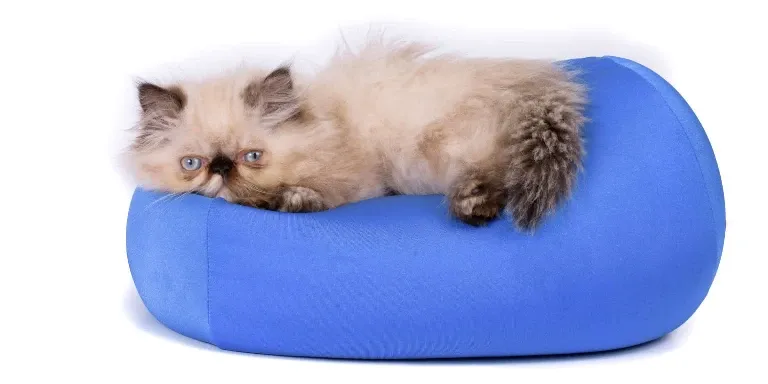The Best Fluffy Pancakes recipe you will fall in love with. Full of tips and tricks to help you make the best pancakes.

Are you considering getting a Persian cat? While these beautiful felines are often seen as a symbol of luxury and sophistication, it’s important to understand that they come with their own set of disadvantages. In fact, the challenges associated with owning a Persian cat can be so significant that they may not be the best choice for everyone.
Some of the disadvantages of owning a Persian cat include their high maintenance grooming requirements, potential health issues such as respiratory problems and eye drainage, and the risk of behavioral issues such as aggressiveness and territoriality if not socialized properly. They also tend to shed a lot and require daily cleaning to avoid hairballs and other issues.
If you’re someone who prioritizes low-maintenance pets, then a Persian cat may not be the right fit for you. These cats have a reputation for being high-maintenance due to their long, thick fur that requires daily grooming. But grooming isn’t the only challenge associated with these cats.
From health issues to potential behavioral problems, there are a number of factors to consider before bringing a Persian cat into your home. In this article, we’ll explore the disadvantages of owning a Persian cat so you can make an informed decision about whether or not this breed is right for you.
Overview of Persian Cats
If you’re considering getting a Persian cat, it’s important to understand the unique challenges that come with their luxurious fur and flat faces. Despite their popularity as a breed, Persian cats require a lot of maintenance. Their long, silky fur requires daily brushing and grooming to prevent mats and tangles. This can be time-consuming and may require professional grooming services to keep their coat in top condition.
In addition to their grooming needs, Persian cats also have some health issues that potential owners should be aware of. Their flat faces make them prone to respiratory problems and eye infections. They can also be prone to dental issues, such as tooth decay and gum disease. Regular check-ups with a veterinarian can help catch any potential health problems before they become more serious.
Despite these challenges, Persian cats are known for their sweet and affectionate personalities. They thrive on attention and love being with their owners. If you’re willing to put in the time and effort to care for their grooming and health needs, a Persian cat can make a wonderful addition to your family.
Grooming Needs
Regular grooming is essential for maintaining the health and appearance of the Persian cat breed. Daily brushing is necessary to prevent matting and tangling of their long, luxurious fur. Without proper grooming, these cats can develop skin irritations and infections that can be painful and costly to treat.
In addition to daily brushing, professional grooming is also recommended for Persians. Professional groomers have the necessary tools and expertise to give your cat a thorough cleaning, including trimming their fur to prevent matting and keeping their nails trimmed. Professional grooming can also help to catch any potential health issues early on, such as skin infections or parasites.
While daily brushing and professional grooming can be time-consuming and costly, it’s important to keep in mind that the health and well-being of your Persian cat should be a top priority. Neglecting their grooming needs can lead to serious health issues and discomfort for your furry friend.
By staying on top of their grooming routine, you can ensure that your Persian cat stays healthy, happy, and beautiful.
Health Issues
Taking good care of your furry friend’s health is crucial, and it’s essential to be aware of any potential health issues that may arise.
While Persian cats are known for their beautiful long hair and charming personality, they are prone to certain health issues that you should keep an eye out for. Common illnesses that Persian cats may face include respiratory problems such as sinusitis and asthma, eye problems such as entropion and cherry eye, and kidney disease.
It’s important to take your cat to the vet for regular check-ups to catch any potential health problems early on. Additionally, it’s essential to keep your cat’s environment clean and hygienic to prevent the development of any respiratory issues.
Unfortunately, Persian cats also have a shorter lifespan expectancy compared to other breeds. While the average lifespan of a cat is around 15 years, Persian cats may only live up to 12 years. As a pet owner, it’s important to be aware of this fact and take extra care of your furry friend’s health to ensure they have a happy and healthy life.
By providing them with a balanced diet, regular exercise, and proper care, you can help increase their lifespan and enjoy many years of love and companionship.
Potential for Needing Specialized Care
You may be surprised to learn that specialized care may be necessary for your furry companion. Persian cats are known for their long, luxurious coats, but this can also be a potential health issue if not maintained properly. These cats require daily grooming to prevent matting and skin irritation. If left unattended, matting can lead to skin infections, which can be painful for your cat and costly for you.
In addition to daily grooming, Persian cats may require specialized diets to maintain their health. These cats are prone to digestive issues, and may require a specific type of food to prevent stomach problems. It’s important to consult with your veterinarian to determine the best diet for your Persian cat.
Regular vet visits are also important to monitor their overall health and catch any potential health issues early on. While Persian cats can be loving and loyal companions, it’s important to be aware of the potential for needing specialized care.
From daily grooming to specialized diets and regular vet visits, owning a Persian cat requires a commitment to their health and well-being. If you’re willing to put in the effort, your furry companion will reward you with years of love and affection.
Shedding and Allergies
If you’re considering adopting a Persian cat, it’s important to be aware of their potential for excessive shedding. This breed has long, thick fur that requires regular grooming to prevent matting and hairballs.
Additionally, Persian cats may not be the best choice for individuals with allergies, as their fur can exacerbate symptoms.
Potential for Excessive Shedding
When owning a Persian cat, be prepared for their potential excessive shedding, as their long, thick fur requires daily grooming to prevent matting and hairballs. Regular brushing is essential to keep their coat healthy and shiny, but it can also help reduce the amount of fur they shed.
You should aim to brush your Persian cat at least once a day, using a sturdy comb or brush that can penetrate their thick fur. To prevent hairballs, you should also ensure that your Persian cat is well-hydrated and fed a healthy diet.
Hairballs can be a common problem for cats that shed excessively, as they can swallow their own fur while grooming. Dealing with shedding can be tough, but there are a few cleaning tips that can help. For example, using a lint roller on your furniture and fabrics can help remove any loose fur that your Persian cat may have left behind.
Additionally, vacuuming regularly can help keep your home clean and free of excess fur.
Allergy Concerns
Now that we’ve discussed the potential for excessive shedding in Persian cats, let’s move on to another disadvantage – allergy concerns.
If you or someone in your household suffers from allergies, a Persian cat might not be the best choice for a pet. These cats are known for producing a higher amount of allergens than other breeds, which can trigger allergies in sensitive individuals.
However, there are prevention measures you can take to minimize the impact of allergies if you do decide to get a Persian cat. Keeping your home clean and free of dust and dander can help, as well as grooming your cat regularly.
You can also consider alternative breeds that are less likely to trigger allergies, such as the Sphynx or Devon Rex. It’s important to research and consider all options before making a decision on what type of cat to bring into your home, especially if allergies are a concern.
Potential Behavioral Issues
If you’re considering getting a Persian cat, it’s important to be aware of potential behavioral issues that may arise.
Separation anxiety is a common problem in cats, and Persians are no exception. They may become distressed when left alone for long periods of time, and may exhibit destructive behaviors as a result.
Additionally, Persians may display aggression towards other pets in the household, so it’s important to introduce them slowly and carefully.
Separation Anxiety
Did you know that Persian cats are prone to separation anxiety? This can lead to destructive behavior and excessive meowing. Persian cats love to be around their owners and can feel lonely and anxious when left alone for long periods of time.
To manage separation anxiety in Persian cats, you can try some training techniques. Leave them with toys and treats to keep them occupied. Gradually increase the time they spend alone, starting with just a few minutes and increasing it slowly over time.
It’s important to create a calm and comfortable environment for your cat when you leave, so they feel safe and secure. With patience and consistency, you can help your Persian cat overcome separation anxiety and lead a happy and healthy life.
Aggression towards Other Pets
You may notice your furry friend becoming aggressive towards other pets in your household. This is a common issue with Persian cats, as they’re known to be territorial and possessive. However, there are ways to address this behavior and prevent any potential harm to other pets.
Training techniques and socialization methods are key to addressing aggression towards other pets. Here are some tips to consider:
- Introduce new pets slowly and carefully, allowing them to get used to one another’s scent before meeting face-to-face.
- Provide separate food and water bowls for each pet to prevent competition and reduce the likelihood of aggression.
- Offer plenty of toys and playtime to keep your pets occupied and reduce stress and anxiety.
- Use positive reinforcement training techniques to encourage good behavior and discourage aggression.
- Consider consulting with a professional trainer or behaviorist for additional guidance and support.
By implementing these tips and taking a proactive approach to training and socialization, you can help your Persian cat live harmoniously with other pets in your household. Remember to be patient and consistent, and to always prioritize the safety and well-being of all your furry family members.
Considerations for Living Arrangements
When living in a small apartment or house, it can be difficult to accommodate the space needs of a Persian cat. Given their long and flowing fur, they’re not well-suited to living outdoors and need to be kept in a controlled environment. However, this can be challenging in a small living space, where there may not be enough room for them to move around and play.
It’s important to carefully consider your living arrangements before bringing a Persian cat into your home. If you live in a small apartment, for example, you may need to create designated areas for your cat to play and exercise, such as a scratching post or a small cat tree. Additionally, you may need to invest in specialized litter boxes or other equipment to ensure that your cat is comfortable and happy in their living space.
Ultimately, while there are certainly challenges associated with accommodating a Persian cat in a small living space, it’s possible to make it work with the right preparation and planning. By taking the time to think carefully about your living arrangements and the needs of your cat, you can create a comfortable, happy home for your furry friend that will provide them with the love and attention they need to thrive.
Do The Cost of Owning a Persian Cat Outweigh the Disadvantages?
When considering the cost of owning a Persian cat, the pricing guide is essential. While the initial investment may seem high, the long-term benefits may outweigh the drawbacks. By understanding the Persian cat pricing guide, prospective owners can make an informed decision about whether the costs are justified for them.
Conclusion
In conclusion, while Persian cats are certainly beautiful, they do come with their fair share of disadvantages. Their long, luxurious fur requires regular grooming, which can be time-consuming and costly. They also have a number of health issues that owners need to be aware of, as well as the potential for needing specialized care.
Additionally, Persian cats shed quite a bit and may not be the best choice for those with allergies. They can also exhibit behavioral issues if not properly socialized or trained. And lastly, when considering getting a Persian cat, it’s important to take into account their living arrangements and ensure they have a safe and comfortable environment.
In the end, the disadvantages of owning a Persian cat should not deter you if you’re willing to put in the time, effort, and resources to care for them. Just like any pet, they can bring joy and companionship to your life, and their beauty and grace are symbols of love and elegance.








